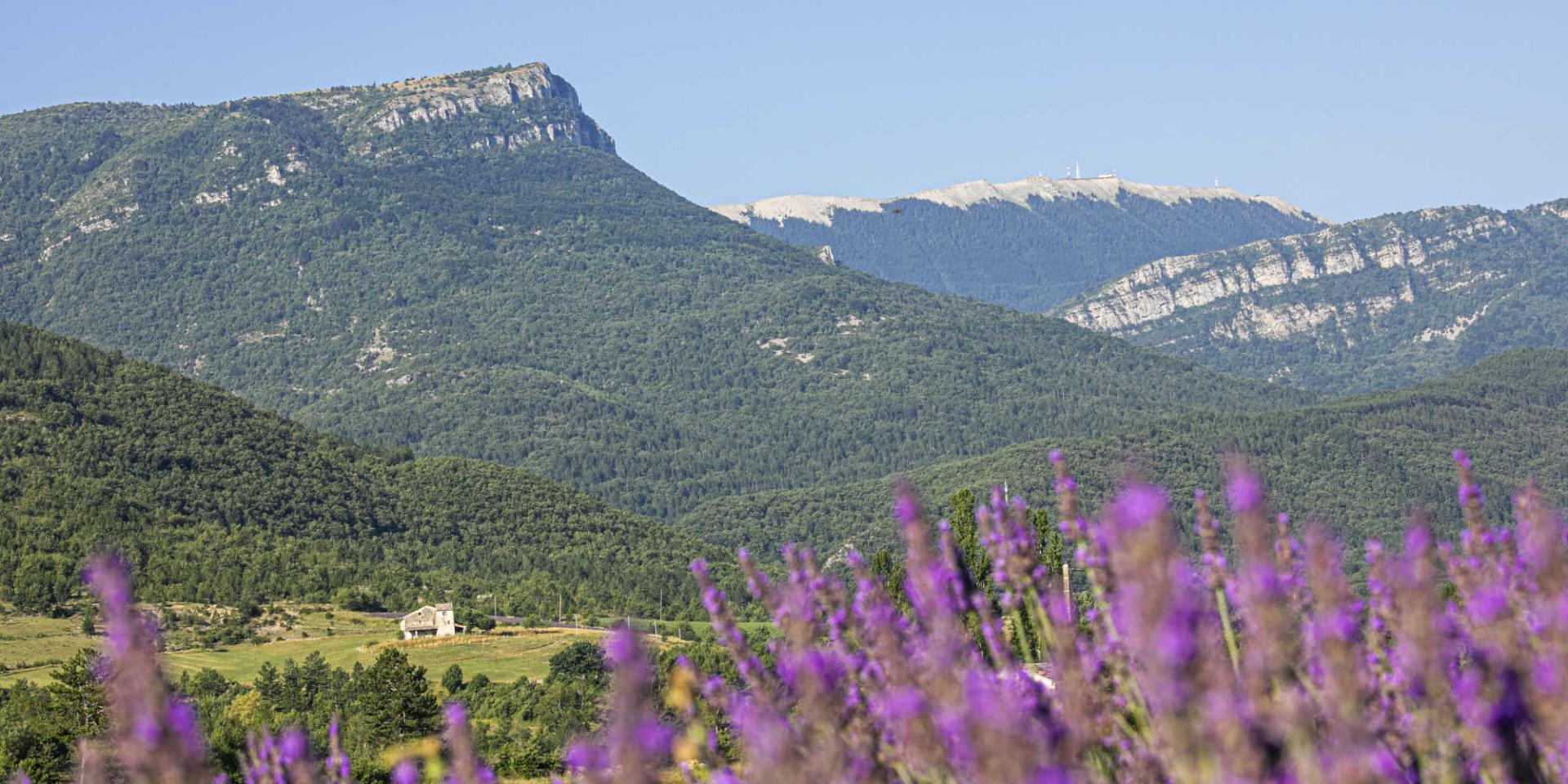An exceptional natural site
Located at 1,825 meters above sea level, this emblematic summit of the Préalpes of Haute-Provence belongs to the same geological formation as the Albion plateau and the famous Mont Ventoux. Subjected to alpine and Mediterranean influences, it hosts a unique fauna and flora and a great diversity of landscapes.
Entomologists can observe on this classified and protected site many important insect species. There are many butterflies and also eastern eggars, large blues, and the Sphinx tityus. Grasshoppers are also very present on the site, as well as beetles.
Walkers can also admire red deers, chamois, roe deers and even wolves. Reptiles, including the meadow viper, also thrive in clearings, meadows and alpine lawns. The sky is the kingdom of birds: shaheen falcon, Eurasian eagle-owl, boreal owl, golden eagles, booted eagles, short-toed snake eagles, harriers. They share their kingdom with more discreet, but equally precious species: Merops apiaster, common rock thrush, little ringed plover, Dryocopus martius and numerous bats. You can enjoy a hike on Montagne de Lure for birdwatching.
The flora is exceptional there, in the forest, in the meadows or altitude pastures. Granny’s bonnet, an endemic species of the Préalpes, blooms in the scree slopes below the summit ridge. You can also admire some specimens of Spanish juniper, a tree endemic to some places in the Mediterranean basin and threatened with extinction.


